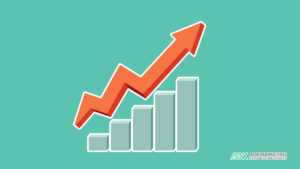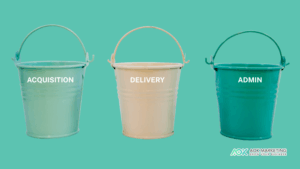Most agencies still lead with vanity metrics—clicks, impressions, reach. But seasoned clients aren’t impressed by traffic spikes if they don’t lead to real results. What they truly care about is this: How much did it cost to get a customer?
Customer Acquisition Cost (CAC), Return on Ad Spend (ROAS), and platform-specific performance are the new benchmarks of trust in client relationships. If you can’t clearly show what’s working, what’s not, and what it costs to scale, you’re not just behind—you’re replaceable.
Your Client Doesn’t Care About Clicks
Here’s the truth:
Your client doesn’t care how many impressions or clicks you got.
They care how much it cost to get a customer.
Or put another way—if you’re not tracking CAC, you’re not doing your job.
Marketing without metrics like Customer Acquisition Cost (CAC) is like gambling blind. Clients expect performance, and that means measurable performance. Every click, every campaign, needs to be tied to a real, trackable business outcome.
A Real Example: PacketLabs
Let’s take PacketLabs—a high-end cybersecurity firm. Their CAC was around $5,500 per customer. Sounds steep, right?
But here’s the kicker: the average revenue per customer was $57,000.
That’s a 10x ROI.
And they knew it—because everything was tracked and visualized using Looker Studio.
Every campaign had clean UTM tagging. Every landing page had conversion goals. Every dollar spent was connected to revenue. That level of transparency gave them confidence to double down on what worked.
What Clients Really Want: Proof, Not Promises
Clients don’t want to be impressed—they want to be informed. They want to know:
-
What’s working?
-
How much is it costing?
-
What’s the return?
-
Where should we invest next?
Here’s some proof from our own work at AOK Marketing:
– GS1 US: We reduced their cost per acquisition (CPA) for non-branded campaigns by over 37% on Microsoft Ads and 22% on Google Ads—and every result was measured and reported in a live dashboard.
– Ron White Shoes: We tracked CAC down to the penny. $15,050 in ad spend turned into $322,900 in revenue—a 21.5x ROI. That’s what happens when you focus on performance tracking, not just performance.
– Strategyzer: A modest $4,500 ad spend on Facebook resulted in $81,000 in sales. That’s an 18:1 ROAS, and the client could see it all in real time.
Clients don’t measure success by effort—they measure it by outcomes. And if you can’t show those outcomes, you’re already falling behind.
The Tools That Make It Happen
Let’s talk tools. If you’re not already using the following, start today:
– Google Tag Manager
– Google Analytics (GA4)
– UTM Tracking Links
– Looker Studio Dashboards
These tools help you pull real numbers on:
-
Customer Acquisition Cost (CAC)
-
Return on Ad Spend (ROAS)
-
Conversion Rates
-
Click-Through Rates (CTR)
-
Bounce Rates
-
Revenue per Campaign
With the right setup, you can automate reporting and give your clients a live dashboard that updates daily. No more scrambling for screenshots or copy-pasting from spreadsheets.
Build Dashboards Clients Actually Use
Looker Studio isn’t just for you—it’s for your clients. If they can’t understand your reporting in 60 seconds or less, it’s too complicated.
The dashboard should answer one core question:
“How are we growing?”
Here’s how I build it:
– One sheet for CAC and ROAS, broken down by platform
– One for campaign performance (CTR, CPC, conversions)
– One for revenue and lead value over time
– Filters by ad type, location, device, and more
Keep it clean. Keep it visual. Keep it client-friendly.
How to Optimize from Data
Tracking is only half the game. The real magic happens when you act on the data.
If your CAC is too high?
– Refine your targeting
– Improve ad creative
– Optimize your landing pages
If your ROAS is dropping?
– Rethink your offer
– Adjust frequency and bidding
– Test new placements or audiences
Data gives you the what—you still need to figure out the why and how to fix it.
Why Transparency Wins Trust
Most marketers lose clients because of a lack of visibility.
When you show up with a clean dashboard, hard numbers, and a plan to improve—you stop being a vendor. You become a partner.
That’s how you build retention. That’s how you earn referrals. That’s how you scale.
So ask yourself:
Can your clients see their CAC, ROAS, and performance across platforms—in one place—right now?
If the answer is no, that’s your action step.
Final Framework
Here’s a quick recap:
Proof
Real case studies (PacketLabs, GS1, Ron White Shoes, Strategyzer) show how tracking CAC and ROAS builds trust and performance.
Promise
Clients expect data-driven decisions. Show them how much a customer costs, how much they’re worth, and how to get more of them.
Plan
– Track CAC, ROAS, and platform KPIs
– Use tools like Looker Studio to report in real time
– Build dashboards that clients actually use
– Optimize constantly, with transparency
Clients don’t need fluff. They need clarity. When you can report CAC, ROAS, and conversion performance across platforms in real time, you position yourself as a strategic growth partner—not just another vendor.
The agencies that win long-term aren’t always the ones with the best creative or the biggest teams. They’re the ones that show the numbers, own the performance, and optimize relentlessly.
If you’re not already tracking what matters most, now’s the time to start. Because in today’s market, data builds trust—and trust wins deals.
About The Author
Dave Burnett
I help people make more money online.
Over the years I’ve had lots of fun working with thousands of brands and helping them distribute millions of promotional products and implement multinational rewards and incentive programs.
Now I’m helping great marketers turn their products and services into sustainable online businesses.
How can I help you?





